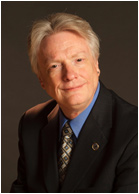Organization
Events
Resources
|
|
The Strange Career of the American Spaceplane: NASA and the Quest for Routine Human Space Operations
Location: Museum of Flight, 9404 East Marginal Way South, Seattle, Washington 98108-4097, Tel.: 206-619-5442
Date: 14 Nov 2015 - 14th
Annual Joe Sutter Black Tie Dinner Lecture
 The quest for an orbital spaceplane represents a unique story of the "social construction of technology."
It suggests that the nature of technological choice is sometimes made not for clear-cut technological reasons but
for broader reasons. Social constructionism is present throughout the story of this quest for a winged, reusable
human orbital capability. In three major ways the spaceplane ideal has dominated the thinking of spaceflight advocates.
First, it represented a strategic approach to flying into, through, and back from space in the era before the advent of
the space age. Second, it remained a dream of spaceflight engineers and advocates even as the expediency of ballistic
capsules became the norm during the space race and led to a return to the effort at the conclusion of the Moon landing
program. Third, it governed the direction of replacement efforts for the Space Shuttle throughout the 1980s and 1990s,
with a brief respite coming only in the aftermath of the loss of the Space Shuttle Columbia in 2003. While the follow-on
human space vehicle for the United States will probably be a capsule, there is renewed commitment to new designs that
extend the spaceplane approach in the aftermath of the Space Shuttle's retirement. Without question, the spaceplane
concept has demonstrated remarkable resilience as the dominant approach pursued by the United States in the overarching
trajectory of human spaceflight throughout the twentieth and into the twenty-first century.
The quest for an orbital spaceplane represents a unique story of the "social construction of technology."
It suggests that the nature of technological choice is sometimes made not for clear-cut technological reasons but
for broader reasons. Social constructionism is present throughout the story of this quest for a winged, reusable
human orbital capability. In three major ways the spaceplane ideal has dominated the thinking of spaceflight advocates.
First, it represented a strategic approach to flying into, through, and back from space in the era before the advent of
the space age. Second, it remained a dream of spaceflight engineers and advocates even as the expediency of ballistic
capsules became the norm during the space race and led to a return to the effort at the conclusion of the Moon landing
program. Third, it governed the direction of replacement efforts for the Space Shuttle throughout the 1980s and 1990s,
with a brief respite coming only in the aftermath of the loss of the Space Shuttle Columbia in 2003. While the follow-on
human space vehicle for the United States will probably be a capsule, there is renewed commitment to new designs that
extend the spaceplane approach in the aftermath of the Space Shuttle's retirement. Without question, the spaceplane
concept has demonstrated remarkable resilience as the dominant approach pursued by the United States in the overarching
trajectory of human spaceflight throughout the twentieth and into the twenty-first century.
Dr. Roger D. Launius is Associate Director of Collections and Curatorial Affairs at the Smithsonian Institution's National
Air and Space Museum in Washington, D.C., a well known career aerospace historian and author who is frequently consulted
by the electronic and print media for his views on space issues, and has been a guest commentator on National Public Radio
and all the major television networks. He has written or edited more than thirty books on aerospace history,
most recently: Historical Analogs for the Stimulation of Space Commerce (NASA SP-2014-4554, 2014);
Space Shuttle Legacy: How We Did It and What We Learned (AIAA, 2013); Exploring the Solar System: The History and Science of
Planetary Probes (Palgrave Macmillan, 2013); Coming Home: Reentry and Recovery from Space (NASA SP -2011-593, 2012), which
received the AIAA's history manuscript prize; and Globalizing Polar Science: Reconsidering the International Polar and
Geophysical Years
A highly sought after speaker Roger has lectured widely on historical aerospace topics to military, academic, technical,
and general audiences. Fellow of the American Association for the Advancement of Science, the International Academy of
Astronautics, and the American Astronautical Society, and associate fellow of the AIAA. Roger has served part-time on
the faculties of several known colleges and universities.
|
|

